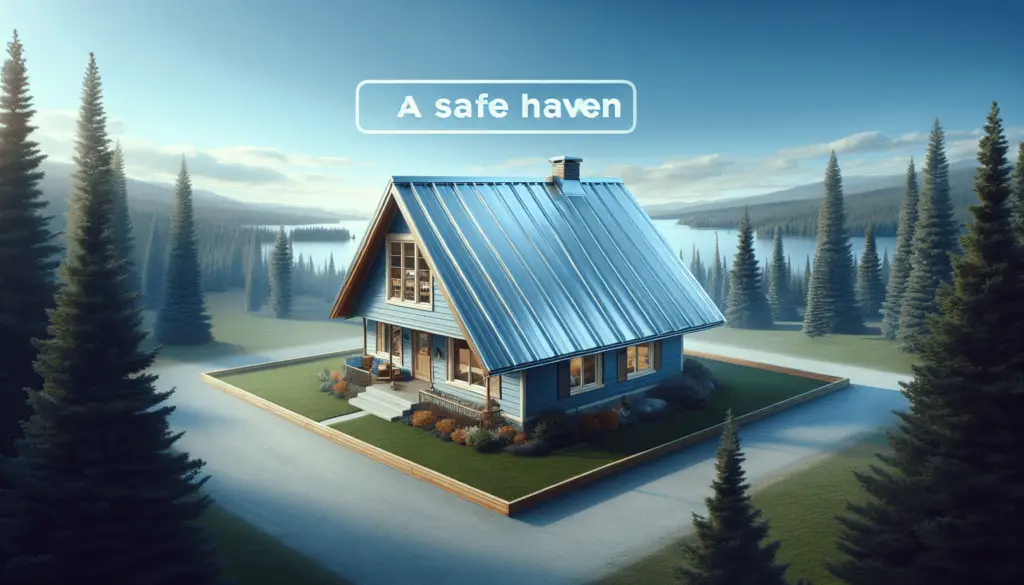Protecting Your Home From Wildfires: A Prepper’s Guide
Are you prepared to protect your home from potential wildfires? Whether you live in a high-risk area or just want to be ready for any emergency, having a plan in place is essential. In this guide, we will discuss practical steps you can take to safeguard your home and family in case of a wildfire. Let’s get started!

Understanding Wildfires
Before we dive into specific strategies for protecting your home, let’s first understand what wildfires are and how they spread. Wildfires are uncontrolled fires that can spread rapidly through forests, grasslands, and other flammable vegetation. They are often fueled by dry conditions, high winds, and hot temperatures. By knowing how wildfires behave, you can better prepare for their potential threat to your home.
How Wildfires Spread
Wildfires can spread quickly due to a combination of factors, including wind, topography, and fuel sources. They can travel uphill faster, fueled by dry vegetation and gusty winds. Understanding these dynamics can help you identify vulnerable areas around your home and take necessary precautions to protect it.
Wildfire Risk Assessment
Assessing the risk of wildfires in your area is key to developing an effective preparedness plan. Factors such as proximity to wildlands, vegetation types, and historical fire data can all contribute to the level of risk your home faces. By knowing your risk level, you can prioritize your efforts and allocate resources accordingly to mitigate potential fire damage.
Preparing Your Home
Now that you have a better understanding of wildfires, it’s time to prepare your home to withstand their threat. By taking proactive measures and making your property more fire-resistant, you can increase your chances of protecting your home and belongings.
Creating Defensible Space
Creating defensible space around your home is one of the most effective ways to reduce the risk of wildfire damage. This involves clearing vegetation, debris, and other flammable materials from around your property to create a buffer zone between your home and potential wildfire sources.
Hardening Your Home
Hardening your home involves making it more fire-resistant by using fire-resistant building materials, installing ember-resistant vents, and ensuring that your roof, windows, and doors are all up to code. By fortifying your home against flames and embers, you can significantly reduce its vulnerability to wildfires.
Emergency Preparedness
In addition to making your home more resilient to wildfires, it’s crucial to have an emergency plan in place to ensure the safety of your family in case of evacuation. By preparing ahead of time and knowing what to do in an emergency, you can minimize the risk to yourself and your loved ones.
Emergency Evacuation Plan
Developing an emergency evacuation plan is essential for ensuring a quick and safe exit in the event of a wildfire. Identify multiple evacuation routes, establish meeting points, and practice your plan with all family members. Being prepared can save valuable time and potentially lives during a wildfire emergency.
Emergency Supplies Kit
As a prepper, you know the importance of having an emergency supplies kit ready at all times. Make sure your kit includes essentials such as food, water, medications, first aid supplies, and important documents. Keep your kit in a readily accessible location and ensure that all family members know where it is located.
During a Wildfire
When a wildfire is approaching your area, it’s essential to stay informed, remain calm, and follow your emergency plan. By being proactive and taking necessary precautions, you can increase your chances of safely navigating a wildfire event.
Stay Informed
Stay informed about wildfire conditions in your area by listening to local news updates, monitoring weather alerts, and following guidance from emergency officials. Being aware of changing conditions can help you make informed decisions about when to evacuate and how to protect your home.
Monitor Air Quality
During a wildfire, smoke and ash can degrade air quality and pose health risks to you and your family. Stay indoors, keep windows and doors closed, and use air purifiers if possible to minimize exposure to harmful pollutants. If you must go outside, wear masks and limit your time in smoky areas.
After a Wildfire
After a wildfire has passed through your area, the danger is not over. It’s essential to assess the damage, check the safety of your home, and begin recovery efforts. By taking immediate action and following proper protocols, you can start the process of rebuilding and moving forward.
Damage Assessment
Once it is safe to do so, assess the damage to your property and belongings. Check for structural damage, debris, and any hazardous materials that may pose a risk to your safety. Take photos of the damage for insurance purposes and document any losses for your records.
Rebuilding and Recovery
Rebuilding and recovery after a wildfire can be a lengthy and challenging process. Work with your insurance company, local authorities, and disaster relief agencies to start the recovery process. Take steps to mitigate future fire risks, such as replanting fire-resistant vegetation and reinforcing your home’s defenses.
Conclusion
Protecting your home from wildfires requires proactive planning, preparation, and readiness. By following the tips and strategies outlined in this guide, you can increase your home’s resilience to wildfire threats and safeguard your family in case of an emergency. Stay informed, stay safe, and be prepared for whatever challenges may come your way. Remember, being a prepper means being ready for anything!
